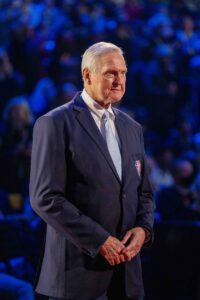When an NBA team cuts a player, he doesn’t immediately become a free agent. Instead, the player is placed on waivers, which serves as a sort of temporary holding ground as the other 29 teams decide if they want to try to add him to their roster.
A player remains on waivers for at least 48 hours after he is officially cut by his team. During that time, a team can place a waiver claim in an attempt to acquire the player. If two or more clubs place a claim, the team with the worst record takes priority (during the offseason and up until December 1, records from the previous season determine waiver order).
If a team claims a player off waivers, it assumes his current contract and is on the hook for the remainder of his salary. The claiming team also pays a $1,000 fee to the NBA office. If no claims are placed on the player, he clears waivers at 4:00 pm Central time two days after his release (or three days later, if he was cut after 4:00 pm CT) and becomes an unrestricted free agent.
While the waiver format is simple enough, not every team will have the salary cap flexibility to make a claim for any waived player it wants. There are only a handful of instances in which a club is able to claim a player off waivers:
- The team has enough cap room to accommodate the player’s entire current-season salary.
- The team has a traded player exception worth at least the player’s salary.
- The team has a disabled player exception worth at least the player’s salary, and he’s in the last year of his contract.
- The player’s contract is for one or two seasons and he’s paid the minimum salary.
- The player is on a two-way contract.
Since most NBA teams go over the cap and sizable TPEs and DPEs are somewhat rare, the majority of players who are claimed off waivers are either on minimum-salary contracts or two-way deals. Claiming those players simply requires an open roster slot.
More often than not though, waived players go unclaimed. In that case, the player’s original team remains on the hook for the rest of his salary.
Unless the player is in the final year of his contract and is waived after August 31, his club has the option of “stretching” his remaining cap hit(s) over multiple years using the stretch provision, which we explain in a separate glossary entry. A team that waives a player and uses the stretch provision on him cannot reacquire that player until after his contract would have originally expired.
In the case of any player without a fully guaranteed contract, the non-guaranteed portion of a player’s salary is removed from a club’s cap immediately once the player is waived.
When a player is “bought out” by his club, he’s placed on waivers as part of the agreement. He and his team agree to adjust the guaranteed portion of his contract, reducing the amount owed to the player by the team, assuming he clears waivers. If he’s claimed by a new team, that buyout agreement is voided, since his new club would take on his full remaining salary.
Here are several more notes related to waiver rules:
- Players can be waived and claimed off waivers during the July moratorium.
- A player waived after March 1 is ineligible for the postseason if he signs with a new team.
- A player on an expiring contract (or a contract that could become expiring as a result of an option decision) can’t be waived between the end of the regular season and the start of the next league year. He also can’t be waived at the end of the regular season if he won’t clear waivers before the date of each team’s final regular season game.
- A player claimed off waivers can’t be traded for 30 days. If he’s claimed during the offseason, he can’t be traded until the 30th day of the regular season.
- A player on a 10-day contract who is cut before the end of that 10-day period does not have to pass through waivers.
- If a player is traded and then is waived by his new team, he can’t re-sign with his former club until one year after the trade or until the July 1 after his original contract would have expired, whichever is earlier.
- Note: If a player is traded twice before being waived, he’s allowed to re-sign with the team that first traded him.
- A player who has Early Bird or full Bird rights retains Early Bird rights if he’s claimed off waivers.
- If a team makes a successful waiver claim, it doesn’t lose its spot in the waiver order — the 30th-ranked team at the end of a season remains atop the waiver priority list until December 1 of that year, even if that team makes multiple offseason claims.
- A team with a full roster can submit a waiver claim and wouldn’t have to clear a spot on its roster for a claimed player until it’s determined that the claim is successful.
Note: This is a Hoops Rumors Glossary entry. Our glossary posts will explain specific rules relating to trades, free agency, or other aspects of the NBA’s Collective Bargaining Agreement. Larry Coon’s Salary Cap FAQ was used in the creation of this post.
Earlier versions of this post were published in past years.
 Few individuals have had a greater impact on the NBA during its history than West, who played 14 seasons for the Lakers from 1960-74, earning All-Star honors in all 14 years.
Few individuals have had a greater impact on the NBA during its history than West, who played 14 seasons for the Lakers from 1960-74, earning All-Star honors in all 14 years.